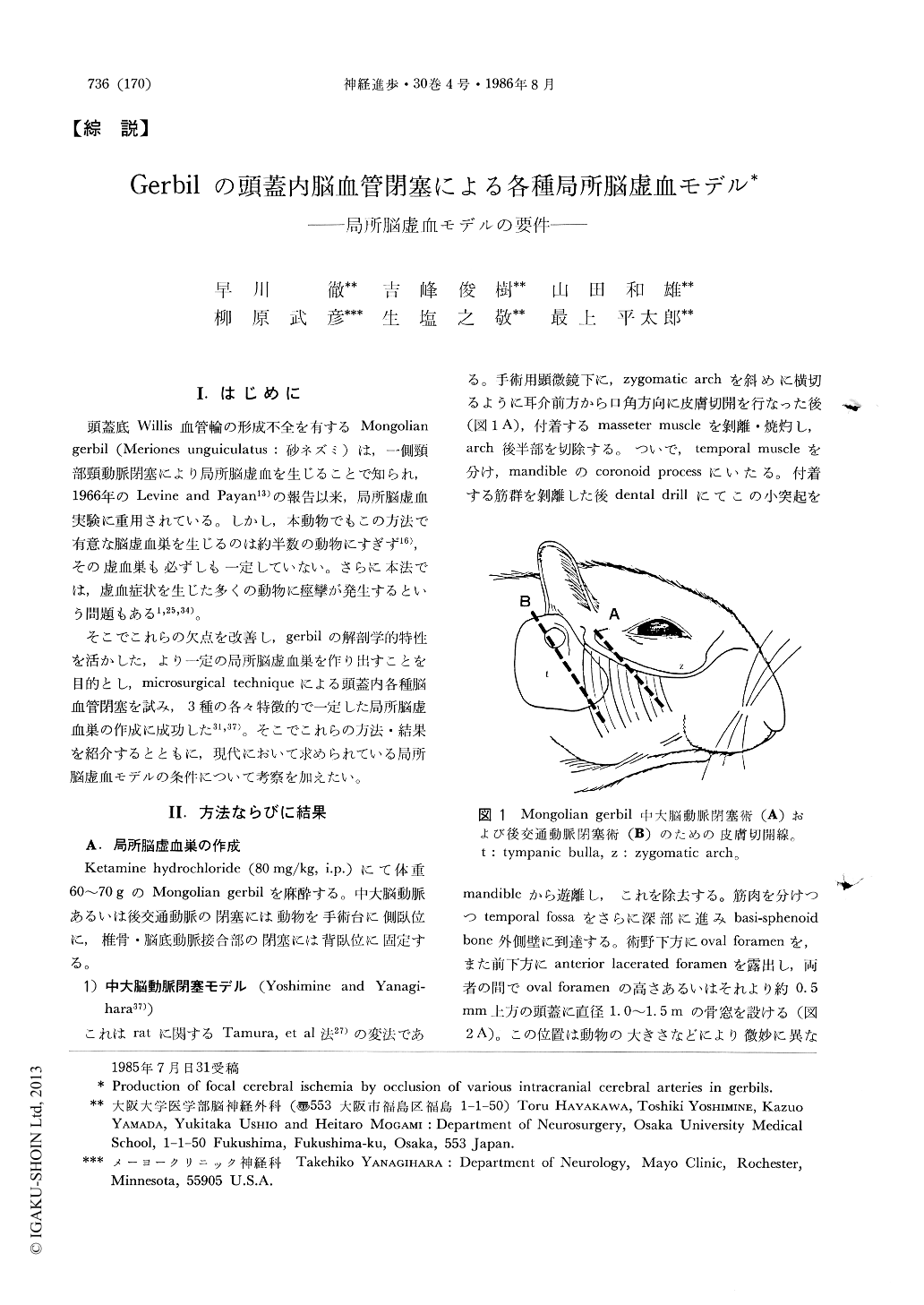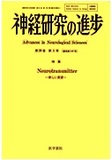Japanese
English
- 有料閲覧
- Abstract 文献概要
- 1ページ目 Look Inside
I.はじめに
頭蓋底Willis血管輪の形成不全を有するMongoliangerbit(Merioncs unguiculatus:砂ネズミ)は,一側頸部頸動脈閉塞により局所脳虚血を生じることで知られ,1966年のLevine and Payan13)の報告以来,局所脳虚血実験に重用されている。しかし,本動物でもこの方法で有意な脳虚血巣を生じるのは約半数の動物にすぎず16),その虚血巣も必ずしも一定していない。さらに本法では,虚血症状を生じた多くの動物に痙攣が発生するという問題もある1,25,34)。
そこでこれらの欠点を改善し,gerbilの解剖学的特性を活かした,より一定の局所脳虚血巣を作り出すことを目的とし,microsurgical techniqueによる頭蓋内各種脳血管閉塞を試み,3種の各々特徴的で一定した局所脳虚血巣の作成に成功した31,37)。そこでこれらの方法・結果を紹介するとともに,現代において求められている局所脳虚血モデルの条件について考察を加えたい。
Three kinds of experimental models for focal cerebral ischemia produced by occlusion of three different cerebral arteries in gerbils are described. The distribution of ischemia in each model corre-lates with the characteristic vascular territory of the occluded artery. The occlusion of the middle cerebral artery causes ischemia in the cerebral cortex and lateral caudo-putamen; the occlusion of the posterior communicating artery produces ischemia in the hippocampus, the lateral part of the thalamus and the superior and inferior colliculi; and the occlusion of the vertebro-basilar junction results in ischemia in the midbrain, pons, cere-bellum and the medial small portion of the thala-mus. The selection and combination of these ex-perimental models may be useful in investigating pathophysiologic, metabolic and histopathologic alterations associated with different types of focal cerebral ischemia.

Copyright © 1986, Igaku-Shoin Ltd. All rights reserved.


